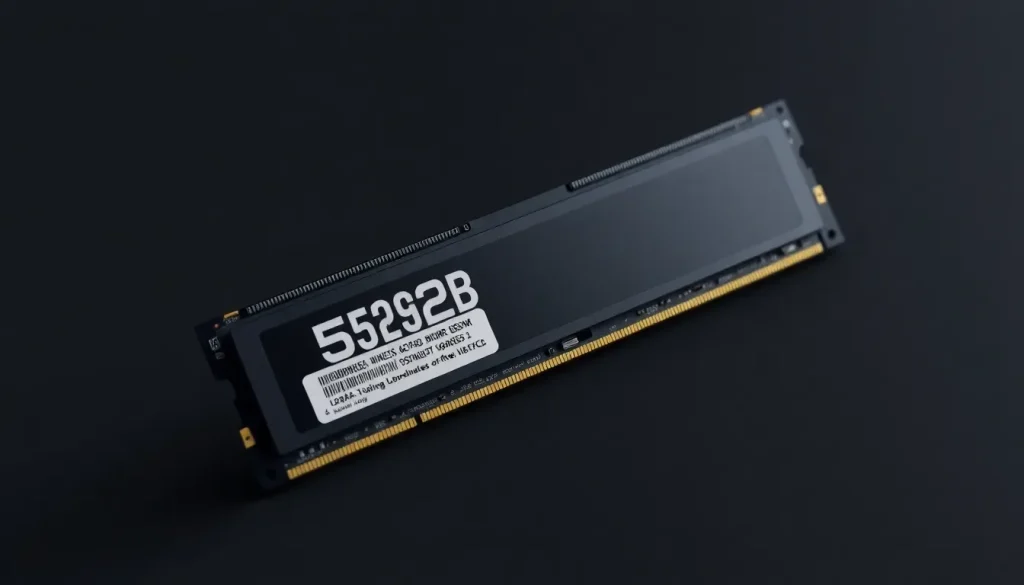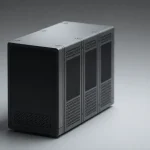Samsung launches 512GB DDR5 memory module for high performance

In an era where computing power is paramount, advancements in memory technology are crucial to meet the growing demands of various industries. Samsung's announcement of a groundbreaking 512GB DDR5 memory module is more than just a technical achievement; it represents a significant leap forward in the capabilities of memory solutions. As we delve deeper into this innovation, we will explore what makes this module unique, its implications for technology, and the broader context surrounding DDR5 memory.
The introduction of Samsung's 512GB DDR5 RAM module marks a pivotal moment in the evolution of memory technology, promising unprecedented speeds and efficiencies for developers and consumers alike. But what does this mean for the future of computing? Let's explore.
Understanding DDR5 Memory Technology
DDR5, or Double Data Rate 5, is the latest generation of DRAM technology designed to enhance performance and efficiency significantly over its predecessor, DDR4. With an impressive speed increase from its earlier version, DDR5 aims to double both the bandwidth and capacity, enabling faster and more efficient data transfers.
- Speed: DDR5 is designed to operate at speeds starting from 4,800 Mbps, reaching up to 6,400 Mbps and beyond, offering twice the data rate of DDR4 modules.
- Capacity: DDR5 supports larger memory capacities, with the Samsung module pushing boundaries at 512GB, accommodating high-demand applications.
- Efficiency: DDR5 uses advanced technologies like High-K Metal Gate (HKMG) to reduce power consumption, making it more energy-efficient.
This leap in memory technology is essential for modern applications such as artificial intelligence, machine learning, big data analytics, and gaming, where high-speed data processing is critical. Samsung's advancements align with the industry's need for faster and more reliable memory solutions.
Samsung's 512GB DDR5 Memory Module: Features and Specifications
The Samsung 512GB DDR5 module is not just a larger memory stick; it incorporates several advanced technologies that enhance its performance. This module is constructed using 32 chips of 16GB each, manufactured on a cutting-edge 10nm process. Its design includes:
- Through Silicon Vias (TSVs): These microscopic connections allow for efficient interconnections between stacked memory dies, improving performance while minimizing space.
- High-K Metal Gate (HKMG): This innovative insulating material reduces current leakage between the dies, enhancing efficiency and thermal performance.
- Integrated Control Chip: This design eliminates the need for a separate data buffer chip, streamlining the module's architecture.
These features not only enhance the module's performance but also contribute to a lower overall power consumption of approximately 13% compared to earlier DRAM technologies. As such, the Samsung DDR5 module is poised to make a significant impact in sectors where power efficiency is crucial, such as data centers and high-performance computing environments.
The Significance of Speed Claims
One of the most talked-about aspects of Samsung's DDR5 module is its claimed speed of 7,200 Mbps. This figure raises some eyebrows since it exceeds the JEDEC DDR5 standard specifications, which set the upper limit between 3,200 and 6,400 Mbps. The discrepancy has sparked discussions about the accuracy of Samsung's claims.
Critics suggest that Samsung may have confused megabits per second (Mbps) with megatransfers per second (MT/s), where 7,200 MT/s would be a more realistic figure that aligns with DDR4's performance improvement. Samsung has refuted these claims, maintaining that their technology indeed supports the higher bandwidth.
Such a debate highlights the critical importance of rigorous standards in the semiconductor industry, as they ensure consistency and reliability in performance claims. Understanding these nuances is vital for consumers and businesses investing in new technologies.
Comparative Analysis: DDR4 vs. DDR5
To appreciate the advancements that DDR5 brings, it's essential to compare it with the previous generation, DDR4. Here are some key differences:
| Feature | DDR4 | DDR5 |
|---|---|---|
| Speed | Up to 3,200 Mbps | Up to 7,200 Mbps |
| Capacity per Module | Up to 128GB | Up to 512GB |
| Power Efficiency | Higher power consumption | 13% more efficient |
| Applications | Standard computing | High-performance computing, AI, gaming |
This comparison illustrates how DDR5 is engineered to meet the escalating demands of modern computing applications, making it a critical component for future technological advancements.
Market Impact and Future Prospects
The introduction of Samsung's 512GB DDR5 module is expected to drive industry-wide changes, pushing other manufacturers to innovate and optimize their DRAM products. The competitive landscape will likely lead to:
- Increased Adoption: As businesses seek to improve their computing capabilities, demand for DDR5 is anticipated to grow, particularly in sectors like gaming, data analytics, and AI.
- Technological Advancements: Other manufacturers, like Micron and SK Hynix, will need to accelerate their research and development efforts to keep pace with Samsung's innovations.
- Price Adjustments: As DDR5 becomes more mainstream, the prices for both DDR4 and DDR5 may fluctuate as market dynamics shift.
Furthermore, collaborations with industry leaders, such as Intel, are already in place to ensure that upcoming processors are optimized for DDR5, indicating a robust ecosystem developing around this technology.
For those interested in visualizing the implications of this technology, check out this insightful video on Samsung's new 512GB DDR5 RAM:
Conclusion: A New Era of Memory Solutions
Samsung's 512GB DDR5 memory module is a landmark achievement that signifies a new era in memory technology. By pushing the boundaries of speed, capacity, and efficiency, Samsung is not only setting new standards but also paving the way for innovations across various sectors. As this technology becomes more widely adopted, it will undoubtedly transform how we approach computing, making it more powerful and efficient than ever before.




Leave a Reply